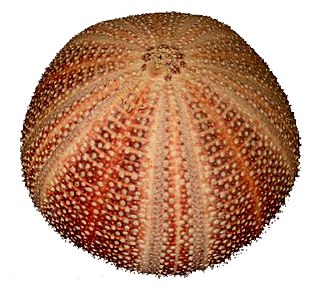 W
WIn zoology, an ambulacrum is an elongated area of the shell of an echinoderm in which a row of tube feet are arranged. It is pluralized as ambulacra. The area on the shell between ambulacra is known as an interambulacrum.
 W
WIn invertebrate biology, an appendage is an external body part, or natural prolongation, that protrudes from an organism's body. An appendage is any of the homologous body parts that may extend from a body segment. These include antennae, mouthparts, gills, walking legs (pereiopods), swimming legs (pleopods), sexual organs (gonopods), and parts of the tail (uropods). Typically, each body segment carries one pair of appendages.
Aptery is the anatomical condition of an animal completely lacking any kind of wings. An animal with this condition is said to be apterous.
 W
WArmour or armor in animals is external or superficial protection against attack by predators, formed as part of the body, usually through the hardening of body tissues, outgrowths or secretions. It has therefore mostly developed in 'prey' species.
 W
WBrachyptery is an anatomical condition in which an animal has very reduced wings. Such animals or their wings may be described as "brachypterous". Brachypterous wings generally are not functional as organs of flight and often seem to be totally functionless and vestigial. In some species however, wings that are vestigial in the sense of not retaining any function related to flight, may have other functions, such as organs of aposematic display in some Orthoptera and Phasmatodea. Brachyptery occurs commonly among insects. An insect species might evolve towards brachyptery in reducing its flight muscles with their associated energy demands, or in avoiding the hazards of flight in windy conditions on oceanic islands, in which flying insects are prone to drowning. Brachyptery also is common in ectoparasitic insects that have no use for wings, and inquiline insects with socially parasitic life strategies that do not require functional wings.
 W
WBradymetabolism refers to organisms with a high active metabolism and a considerably slower resting metabolism. Bradymetabolic animals can often undergo dramatic changes in metabolic speed, according to food availability and temperature. Many bradymetabolic creatures in deserts and in areas that experience extreme winters are capable of "shutting down" their metabolisms to approach near-death states, until favorable conditions return (see hibernation and estivation).
 W
WCement glands are small organs found in Acanthocephala that are used to temporarily close the posterior end of the female after copulation.
 W
WThe clitellum is a thickened glandular and non-segmented section of the body wall near the head in earthworms and leeches, that secretes a viscid sac in which eggs are stored. It is located near the anterior end of the body, between the fourteenth and seventeenth segments. The number of the segments to where the clitellum begins and the number of segments that make up the clitellum are important for identifying earthworms. In microdrile earthworms, the clitellum has only one layer, resulting in the amount of eggs being lesser than that of the megadrile earthworms, which have larger multi-layered clitellum that have special cells that secrete albinum into the worms' egg sac.
 W
WCorniculate, an Anglicisation of the Latin diminutives corniculata, corniculatum, and corniculatus, describes an object possessing hornlike extensions. The root is Latin cornu = "horn". The term is used to describe the shape of the corniculate cartilages of the larynx. The horned puffin is named for its distinctive horn-like coloration. Likewise Oxalis corniculata is named for its two erect capsules, which resemble little horns, and the bird's-foot trefoil Lotus corniculatus and goat's horn mangrove Aegiceras corniculatum are named for their horn-shaped fruits.
 W
WCuvierian tubules are clusters of fine tubes located at the base of the respiratory tree in some sea cucumbers in the genera Bohadschia, Holothuria and Pearsonothuria, all of which are included in the family Holothuriidae. The tubules can be discharged through the anus when the sea cucumber is stressed. They lengthen when they come into contact with seawater and become adhesive when they encounter objects so that they function as a defence against potential predators. They are named after the French zoologist Georges Cuvier, who first described them.
 W
WCyphopods, also known as vulvae, are paired sacs in female millipedes that located on the underside of the third body segment that store sperm and connect to the oviduct. Cyphopods are sclerotized, and usually hidden behind a small opening. Despite the connotation of the suffix -pod, cyphopds are not derived from walking legs.
 W
WThe dactylus is the tip region of the tentacular club of cephalopods and of the leg of some crustaceans. In cephalopods, the dactylus is narrow and often characterized by the asymmetrical placement of suckers and the absence of a dorsal protective membrane. In crustaceans, the dactylus is the seventh and terminal segment of their thoracic appendages. In certain instances the dactylus, together with the propodus, form the claw.
 W
WThe gastrovascular cavity is the primary organ of digestion and circulation in two major animal phyla: the Cnidaria and Platyhelminthes (flatworms). The cavity may be extensively branched into a system of canals. In cnidarians, the gastrovascular system is also known as the coelenteron, and is commonly known as a "blind gut" or "blind sac", since food enters and waste exits through the same orifice.
 W
WIn anatomy, a heterodont is an animal which possesses more than a single tooth morphology.
 W
WThe hyoid apparatus is the collective term used in veterinary anatomy for the bones which suspend the tongue and larynx. It consists of pairs of stylohyoid, thyrohyoid, epihyoid and ceratohyoid bones, and a single basihyoid bone. The hyoid apparatus resembles the shape of a trapeze, or a bent letter "H". The basihyoid bone lies within the muscle at the base of the tongue.
 W
WThe madreporite is a light colored calcareous opening used to filter water into the water vascular system of echinoderms. It acts like a pressure-equalizing valve. It is visible as a small red or yellow button-like structure, looking like a small wart, on the aboral surface of the central disk of a sea star or sea urchin. Close up, it is visibly structured, resembling a "madrepore" colony. From this, it derives its name.
 W
WThe manus is the zoological term for the distal portion of the fore limb of an animal. In tetrapods, it is the part of the pentadactyl limb that includes the metacarpals and digits (phalanges). During evolution, it has taken many forms and served a variety of functions. It can be represented by the hand of primates, the lower front limb of hoofed animals or the fore paw and is represented in the wing of birds, bats and prehistoric flying reptiles (pterosaurs), the flipper of marine mammals and the 'paddle' of extinct marine reptiles, such as plesiosaurs and ichthyosaurs.
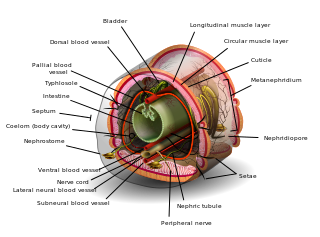 W
WThe nephrostome is the funnel-like component of a metanephridium. It is always oriented towards the coelom. The nephrostome is covered from the inside with cilia, which push the water, metabolic wastes, unnecessary hormones and other substances into the metanephridium.
 W
WThe nuchal organ is a ciliated pit or groove present at the posterior end of the prostomium of annelid worms, some cephalopods, and other invertebrates.
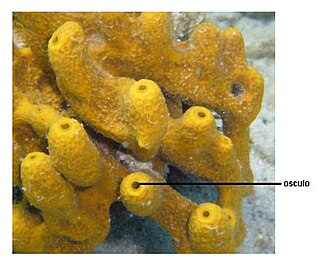 W
WThe osculum is an excretory structure in the living sponge, a large opening to the outside through which the current of water exits after passing through the spongocoel. Wastes diffuse into the water and the water is pumped through the osculum carrying away with it the sponge's wastes. Sponges pump large volumes of water: typically a volume of water equal to the sponge's body size is pumped every five seconds. The size of the osculum is regulated by contractile myocytes. Its size, in turn, is one of the factors which determines the amount of water flowing through the sponge. It can be closed completely in response to excess silt in the water.
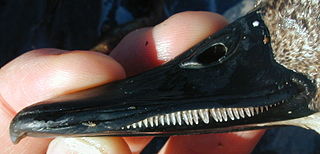 W
WA pecten is a comb-like structure, widely found in the biological world. Although pectens in various animals look similar, they have a varied range of uses, from grooming and filtering to sensory adaptations.
 W
WA pedicellaria is a small wrench- or claw-shaped appendage with movable jaws, called valves, commonly found on echinoderms, particularly in sea stars and sea urchins. Each pedicellaria is an effector organ with its own set of muscles, neuropils, and sensory receptors and is therefore capable of reflex responses to the environment. Pedicellariae are poorly understood but in some taxa, they are thought to keep the body surface clear of algae, encrusting organisms, and other debris in conjunction with the ciliated epidermis present in all echinoderms.
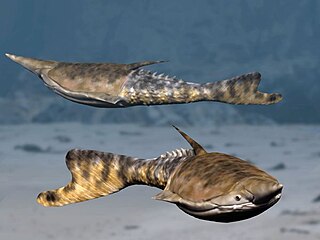 W
WA plate in animal anatomy may refer to several things:
 W
WRostrum is a term used in anatomy for a number of phylogenetically unrelated structures in different groups of animals.
 W
WStichosome is a multicellular organ that is very prominent in some stages of nematodes and consists of a longitudinal series of glandular unicellular cells (stichocytes) arranged in a row along the oesophagus that form the posterior esophageal glands. It opens into the esophageal lumen and apparently functions as a secretory gland and storage organ.
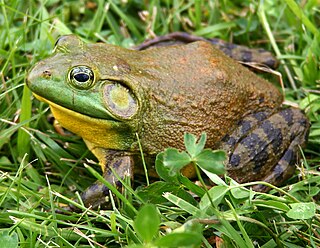 W
WThe tympanum is an external hearing structure in animals such as mammals, birds, some reptiles, some amphibians and some insects.
 W
WA zooid or zoöid is a single animal that is part of a colonial animal. This lifestyle has been adopted by animals from separate unrelated taxa. Zooids are multicellular; their structure is similar to that of other solitary animals. The zooids can either be directly connected by tissue or share a common exoskeleton. The colonial organism as a whole is called a zoon, plural zoa.